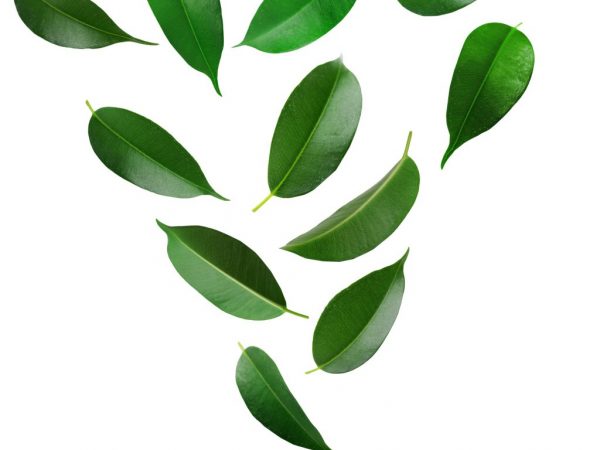Reasons for the fall of ficus leaves
When growing ficuses at home, flower growers often face problems associated with caring for home flowers. It is not uncommon for a ficus to drop leaves.

Causes of leaf fall in ficus
The time is coming
For many lovers of ficuses, the period when the latter suddenly begins to shed its leaves becomes a complete surprise. They begin to look for the reasons leading to the fact that the leaves turn red, darken to the color of rust, their tips curl inward, bend and deteriorate.
So, for the flower Benjamin (Balzamin) and its curly variety Nitida, the slightest changes in the state of room comfort become the reason for the loss of leaves: a change in care methods, transplantation, an attempt to propagate in winter or autumn.
Ficus, even with full care, loses leaves annually, this is a natural process of changing foliage in winter. Subsidence occurs at the onset of the autumn-winter season. This is due to the aging of vegetation and the need for its renewal. Immediately with the arrival of cold weather, the leaves fall, become lethargic, turn yellow, curl and crumble. In winter, the leaves on the ficus plant fall off or dry out not entirely, but only the lower ones, falling at the beginning of the trunk. With the onset of spring heat, new and young ones will grow on the empty trunk of the ficus.
Reasons for falling foliage
If the ficus has dropped the leaves or they have dropped, wilted, bent, curled up, turn yellow and brown, fly around not only when the cold season comes, the reasons lie in improper care: the home flower is missing something.
One of the most common reasons for leaf fall is a change in climatic conditions in which the plant is used to developing, which often occurs during its reproduction or transplantation.
Often, a change in the location of a flower pot is a temporary phenomenon, so that a flower with twisted leaf blades hangs down the foliage, and then throws it off. In such a situation, it is quite possible to restore the former beautiful crown of the flower, root it until the leaves of the ficus have completely fallen off.
Among other reasons why the ficus sheds leaves, the most famous in home floriculture are distinguished:
- excessive importance;
- sudden changes in temperature and drafts,
- moving to new conditions immediately after transplanting,
- insufficient lighting,
- oversaturation of the soil layer with moisture,
- the presence of insectivorous parasites and fungal infections,
- pesticide-shipped earth.
Diseases

Improper care can cause illness
In the list of common reasons why ficuses shed their leaves, the first number is the emerging infections and care problems. In most cases, they are easily removable. Timely measures taken allow you to reanimate the indoor flower.
Avitaminosis
Lack of nutritional components in the soil where the ficus grows leads to crushing of the leaves. With inadequate feeding and improper care, when a too dry climate and excessively high temperature indicators are created in the room, the situation is aggravated: the ficus leaves become smaller, you can see how they wilted and dry, which often leads to abscission. With insufficient fertilization, the ficus usually begins to fall from the bottom up.
Rot
When yellow spots appear on the leaves of the ficus, we can talk about rot on the root system of the plant, which manifested itself due to excessive watering. An excess of liquid, which does not have time to evaporate from the soil layer in the pot, leads to decay, yellowing, foliage and death.
Hypervitaminosis
Over-saturation of the soil with fertilizers also adversely affects the quality of the ficus foliage. For such reasons, brown spots appear on the leaves - specks, the foliage turns black and flies over time. The fall occurs randomly.
Pests
The presence of a spider mite, aphids, scale insects and other insect pests on the plant looks like convex spots of a brown or brown hue, the leaf blades turn white from plaque.
Parasites can settle along the veins of the leaf blade. You can save a flower from excessive shedding of leaves by using modern pest control products. As a result, a plant with a beautiful green crown will grow.
Fungal infections
Signs of rot and sooty fungus are black or red spots of mold, which are located on the outer part of the leaf blade and may be present on the stem of the plant. Ficus leaves affected by a fungal infection begin to turn yellow and fall off. A fungal disease not detected in a timely manner becomes a frequent cause of plant death, and in a short time.
Initial measures

The flower can be saved
When asked what to do if the leaves of the ficus are falling, most flower growers advise to find out exactly the cause of this process and eliminate it by arranging proper care.
If parasites are detected and signs of a fungal infection are present, immediate measures are taken to save the flower:
- At the initial stage of the development of the ficus disease, the affected areas of the plant are cut off, and the remaining intact foliage is cleaned of pests and mold spots with a soft brush, rinsing with running water.
- Disinfection is carried out by treating the stem and leaves with garlic infusion made from 60-80 g of garlic, infused in a liter of boiling water for an hour. The procedure is carried out daily until the problem with the foliage is completely eliminated.
- As a disinfection, soap-alcohol mixtures can be used, for the creation of which laundry soap is mixed with a spoonful of alcohol in equal proportions, the ficus is sprayed with this solution at intervals of 4 days and followed by washing the leaves after 12 hours. The full course of treatment is 2 weeks.
- Treatment of an indoor flower from shedding leaves can be carried out using specialized means designed to combat parasites and fungal infections of plants.
Causes of foliage loss in some species
In different types of ficuses, different causes of foliage can be traced. It depends on how exactly you need to care for the plant.
Ficus Benjamin
The reason for the yellowing and falling of the leaves in the Benjamin ficus can be:
- A change in the usual conditions of detention, since this species does not tolerate a change in conditions, temperature jumps, a decrease in the light regime. Moving the ficus Benjamin from his usual warm place to a colder one will become a reason for him to drop leaves.
- Sudden changes in temperature and hypothermia as a result of contact with cold window glass or placing a flower container on a cold ceramic surface, so the place for the pot is chosen so that the leaves do not freeze.
- Unfavorable conditions: an overabundance of light, excessively dry air, overdried soil, leading to the appearance of yellow spots and yellow edges on the leaves.
- An imbalance in top dressing: a lack of micro- and macroelements, as well as oversaturation of the soil with fertilizers.
The natural process of replacing foliage with Benjamin's ficus occurs not only in the autumn period. The foliage of this species can fall off during the winter, losing its crown by 10-20%. If the indoor flower begins to lose foliage every day, it is worth analyzing its watering and sufficient illumination.
Rubbery species
This ficus is the most stable and withstands almost any conditions of maintenance and care, however, it may also have reasons to shed leaves, including:
- waterlogging of soil and stagnant water,
- insufficient lighting in the room,
- excessive fertilization of the earth with top dressing,
- low temperatures and the presence of drafts.
Another reason why rubbery ficus can shed its leaves is a flower pot that is not suitable for it. If a pot that slightly embarrasses him is more suitable for Benjamin's indoor flower, the rubber-bearing species prefers freedom, therefore the container for growing it should be larger in size, not restricting the plant, otherwise its leaves begin to shrink in size and fall off after a while.
The subtleties of preserving the crown of ficus

Different varieties have their own characteristics of care.
In the course of growing various types of ficus, many growers have noted for themselves that this plant reacts unfavorably to some factors.
sunlight
Not all species like direct sunlight on the leaves. If the variegated types of flowers are light-loving, some ficuses, for example, Benjamina, prefers shading for comfortable well-being.
In winter, it is recommended to place the flower pot closer to the window, because the lack of lighting in the place where the ficus grows will certainly affect the quality of its leaves - they will begin to fall off.
Water
Ampel large-leaved varieties of ficuses love frequent spraying. To preserve their foliage, sufficient moisture is most important, therefore, during the growing process, many growers install a flower pot directly on pallets with pebbles or expanded clay and constantly keep them moist.
Unlike ampelous species, tree-like ficuses like their soil layer to be dried and there are no lumps.
Transfer
Frequent replanting adversely affects the quality of the foliage of all types of ficus. Often for this reason, indoor flowers begin to shed their leaves, because experienced flower growers are of the opinion that the plant should be transplanted no more than once every two years.
For already grown large plants, only the top layer of soil is subject to replacement.
Top dressing
With a lack of nutrition in many tree species, the leaves turn yellow and fall off. So that the trunk does not remain without foliage, for the period of active growth of the plant, you should stock up on mineral fertilizing for decorative deciduous plants, which are applied at intervals of 2 weeks.
The growth of new leaves in ficuses activates nitrogen fertilization, yellowing of the foliage prevents magnesium fertilization.
Ficus feeding is carried out from March to September. At rest, which occurs in winter, fertilizers are not applied to the soil. In addition, due to the reduction in daylight hours in flowers, the process of photosynthesis is reduced to zero, and the root system does not need as much water as in summer, therefore the number of waterings is minimized so as not to flood the plant.
Before fertilizing the soil, it must be moistened in a day by spilling it with warm water.
In order to avoid burning out the root system, mineral fertilizers should be used for feeding ficuses in the dosage that is prescribed in the instructions. Otherwise, oversaturation of the earth will be one of the reasons why the ficus will begin to shed its leaves. For the initial fertilization of the soil, it is advised to reduce the dose to half. A plant weakened by parasites and fungal infections is not fully fertilized, the amount of feeding for it is also reduced.


